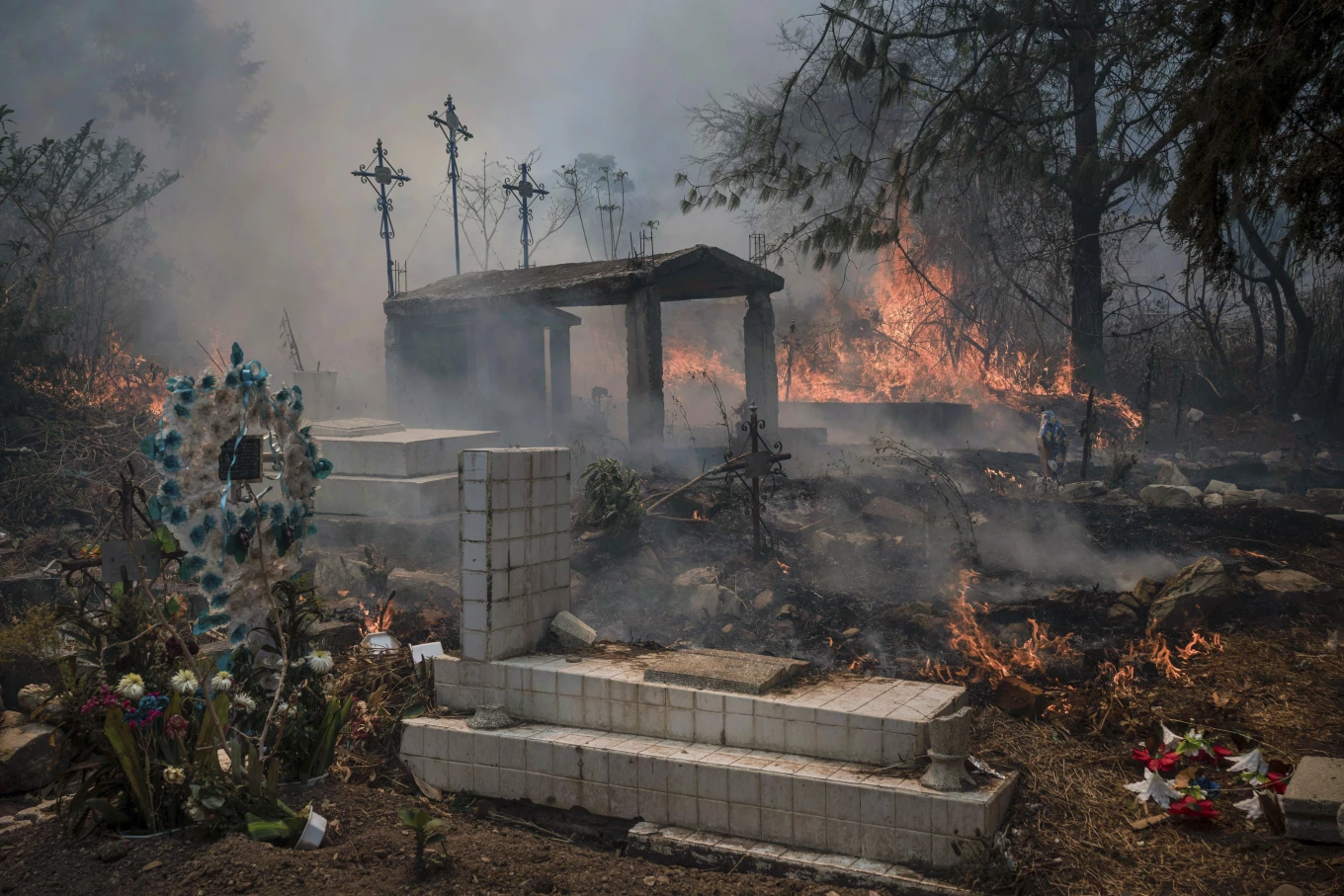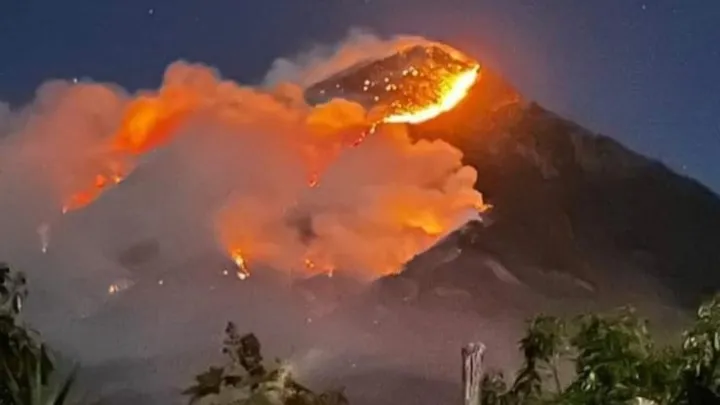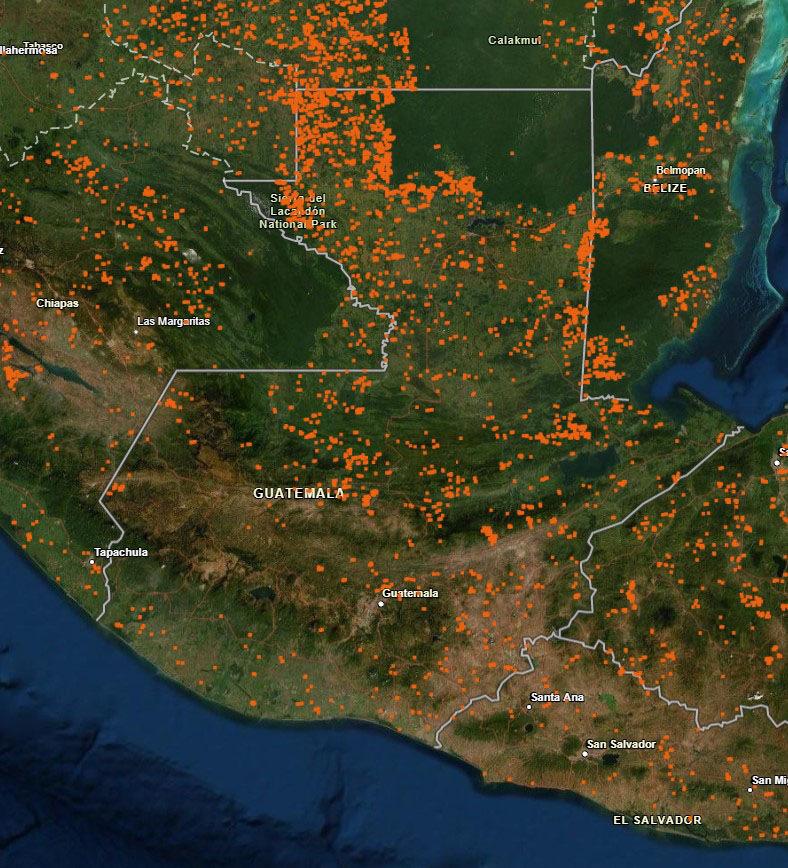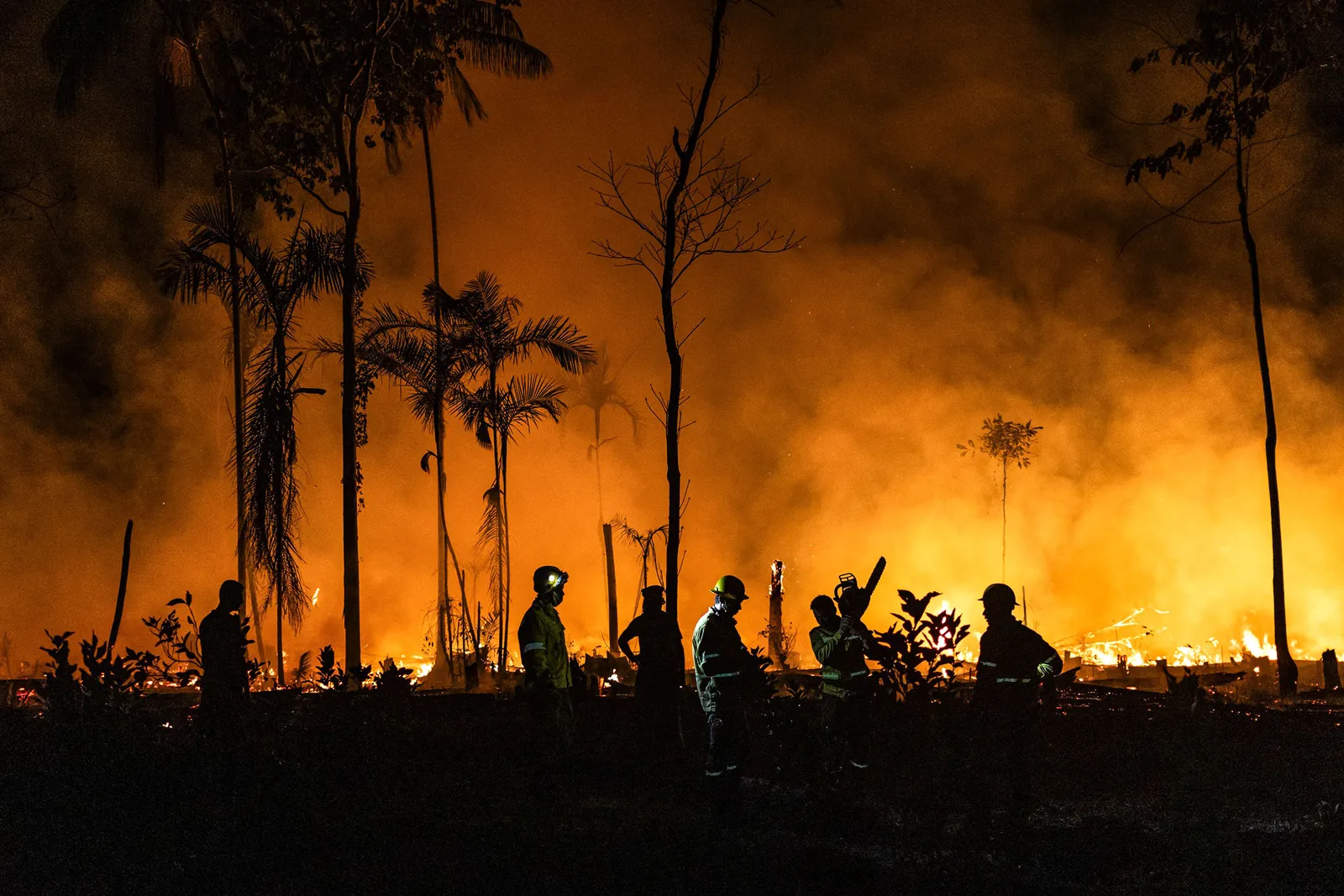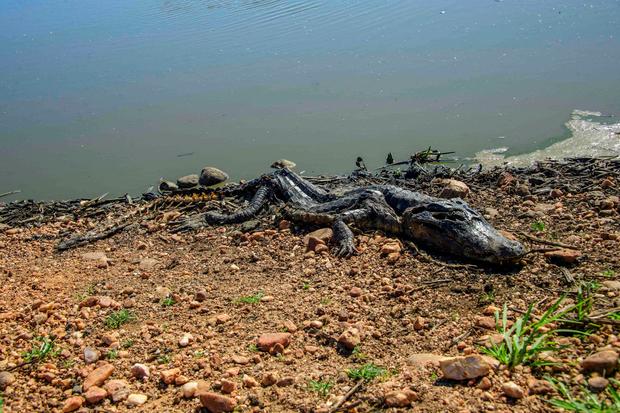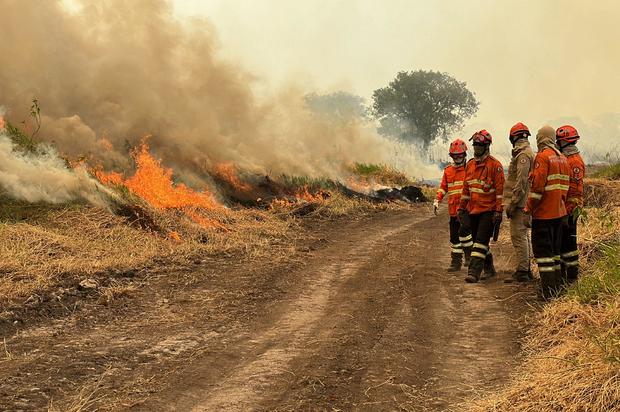- hot-spots
- forest fire
- Mexico
- Wildfire in Latin America
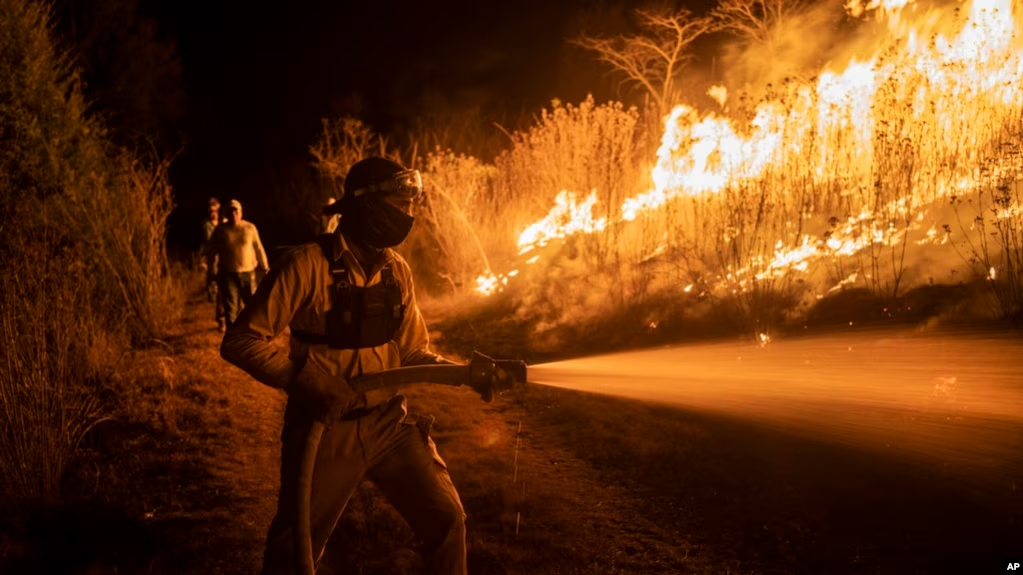
Problems
Since the 1980s, the Amazon Basin has been warming at an average of 0.27 degrees Celsius per decade. Some parts, including the forest’s central and southeast regions, have been warming even faster, at a rate of 0.6 degrees per decade. Today, dry season temperatures are, on average, 2 degrees higher than they were 40 years ago. The increasing frequency and intensity of wildfires in Latin America are symptomatic of broader environmental and climatic shifts. Deforestation, land-use change, and climate variability make a landscape increasingly prone to fires. Combined with the often insufficient local fire management and prevention capacity, these elements create a volatile mix that can lead to large-scale environmental disasters. In March 2024, Mexico was engulfed by a wave of wildfires that claimed lives and laid bare the broader environmental challenges facing Latin America. President Andres Manuel Lopez Obrador confirmed the tragic loss of four lives in Mexico State, which encircles the capital. The fires, part of a larger pattern, have seen 116 active blazes nationwide, contributing to a worrying trend in the region. With around 400 fires recorded in Mexico up to mid-March, the nation has decimated over 13,000 hectares of land. The fires’ reach, extending to Chiapas at the southern tip near Guatemala, illustrates the transnational nature of this disaster. Fueled by deliberate acts and agricultural activities, these incidents point to a complex web of causes, necessitating a multifaceted response. This phenomenon is not isolated to Mexico. Countries across Latin America face similar threats, with wildfires becoming increasingly common. In Guatemala, adjacent to Mexico’s southern border, the situation mirrors the challenges faced by its northern neighbor. Here, fires routinely threaten the lush biodiversity and the livelihoods of local communities, often exacerbated by the same mix of human activities and natural conditions. The situation in Brazil, particularly in the Amazon and the Pantanal regions, has garnered international attention. The recurring fires in these areas have sparked global concern over the loss of vital ecosystems, driving home the point that the wildfire crisis is a shared problem, necessitating regional collaboration and international support. Real-time satellite monitoring shows that in 2024, more than 10,000 wildfires have ripped across 11,000 square kilometers of the Amazon, across multiple countries. Never have so many fires burned so much of the forest this early in the year. Scientists worry this is pushing the region closer and closer to a tipping point, where widespread degradation and repeated burning of the forest will become unstoppable.
Gallery
8Timelines
2024
March 27
According to media, as of 27 March, at least four people died in Mexico State and a total of 400 wildfires, with 116 still active fires, have burnt more than 13,000 ha. Emergency crews are working to contain multiple wildfires burning in central and southern Mexico. Temperatures over 40 C (104 F) in southern and western Mexico and over 30 C (86 F) across much of the country. The Moderate Resolution Imaging Spectroradiometer (MODIS) acquired a true-color image of dozens of fires burning across southern Mexico and Guatemala. In Guatemala, 430 VIIRS fire alerts have been reported so far in 2024 considering high confidence alerts only. This total is low compared to previous years going back to 2012. In Guatemala, the region with the most significant number of fire alerts was Chiquimula, with 12 fire alerts. This represents 6.8% of all alerts detected in Guatemala and is unusually high compared to the number of fires in the same period going back to 2012.
March 15
Several wildfires have been burning across Mexico since 15 March, causing casualties and damage. The major ongoing active fire is across Guerrero and Mexico States, and according to the JRC Global Wildfire Information System (GWIS), this wildfire has burnt an area of approximately 9,100 ha.
February 28
The Amazon Rainforest is on fire. Brazil’s National Institute for Space Research announced that 2,940 fires had burned in the Brazilian Amazon over that month—a record-breaking number for February.
2022
December
The 2022 New Mexico wildfire season is an ongoing series of wildfires burning throughout the U.S. state of New Mexico. As of December 13, 2022, 904,422 acres (366,007 ha) had burned across the state. The burned acreage figure for 2022 is well above the 1995-2015 average of approximately 270,000 acres burned annually. Several factors contributed to the severe wildfire season. Most of the state is experiencing extreme to exceptional drought as part of a broader severe drought in the North American West, fueled by climate change. A reduced winter snowpack, long periods of higher-than-normal temperatures, and sustained strong winds have resulted in extreme fire conditions and several major incidents. Since 2010, Guatemala has lost 45.8 ha of natural forest, equivalent to 24.1 Mt of CO₂ emissions. Since 2010, Mexico has lost 3 ha of tree cover, equivalent to 1.22 kt of CO₂ emissions. Since 2010, Brazil has lost 3.23 Mha of natural forest, equivalent to 2.00 Gt of CO₂ emissions.
June
Starting in May the Black Fire, and ending in late July, burned in the Gila National Forest northeast of Silver City. The fire consumed some 325,000 acres and became the second-largest wildfire in state history. Thousands of state residents were forced to evacuate for extended periods, and the fires produced smoke plumes with severe effects on air quality and health throughout New Mexico.
April
The season has seen a large number of significant wildfires. In early April, the McBride Fire destroyed over 200 structures and killed two people. The Calf Canyon/Hermits Peak Fire grew to become the largest fire in New Mexico history.[9] It destroyed over 900 structures.
2016
In Mexico, the most fires recorded in a year with 10. In Guatemala, the most tree cover loss was to fires with 53.3 kha lost to fires — 30% of all tree cover loss for that year. In Brazil the most tree cover loss is due to fires with 2.38 Mha lost to fires — 44% of all tree cover loss for that year.
2013
In Guatemala, the most fires recorded in a year were in 2013, with 2,814.
2010
Del Centro in Mexico had 8.27 kha of tree cover, extending over 16% of its land area. Guatemala had 6.91 Mha of natural forest, extending over 64% of its land area. Brazil had 492 Mha of natural forest, extending over 59% of its land area.
1980
Since the 1980s, the Amazon Basin has been warming at an average of 0.27 degrees Celsius per decade. Some parts, including the forest’s central and southeast regions, have been warming even faster.
